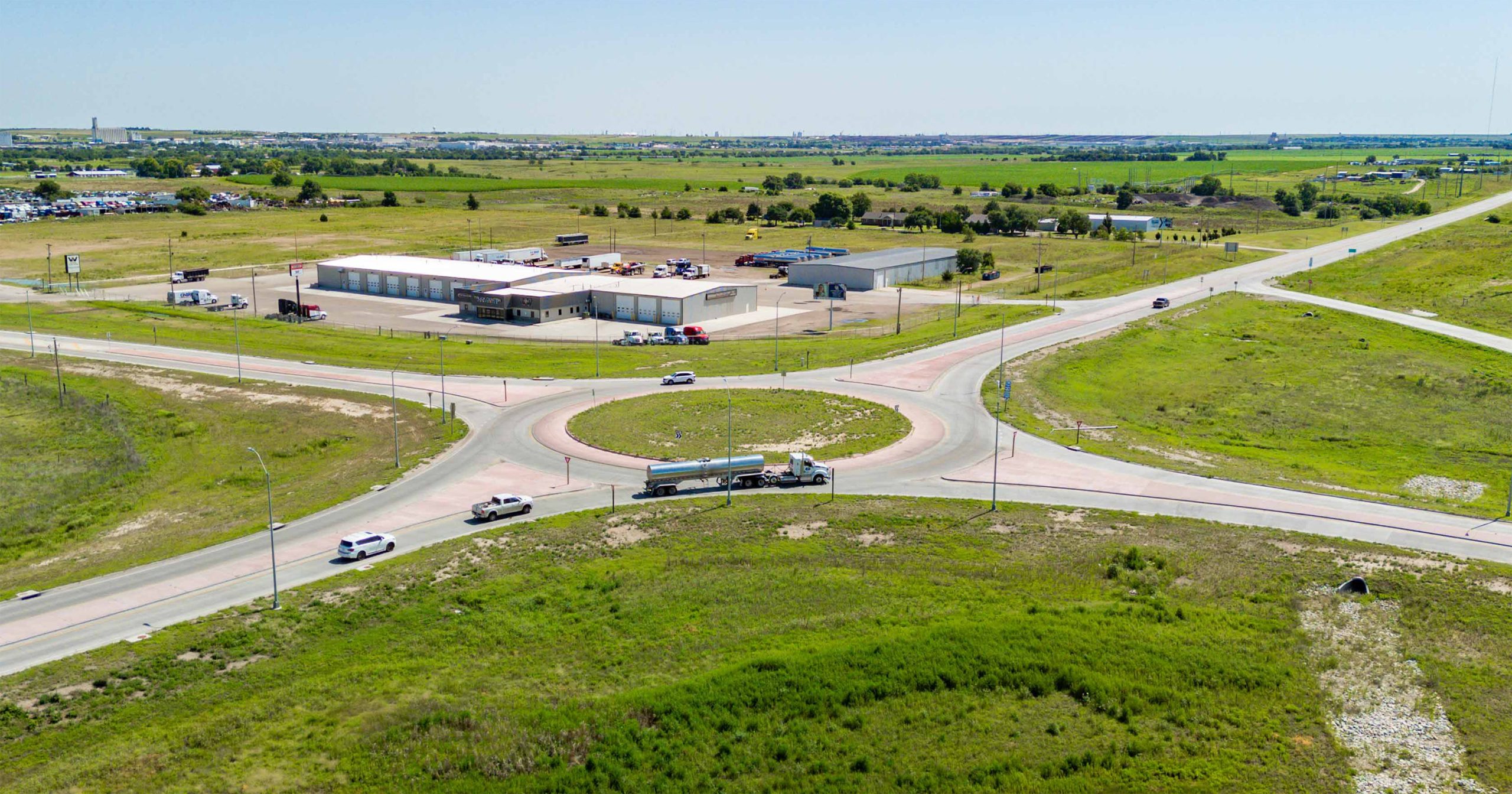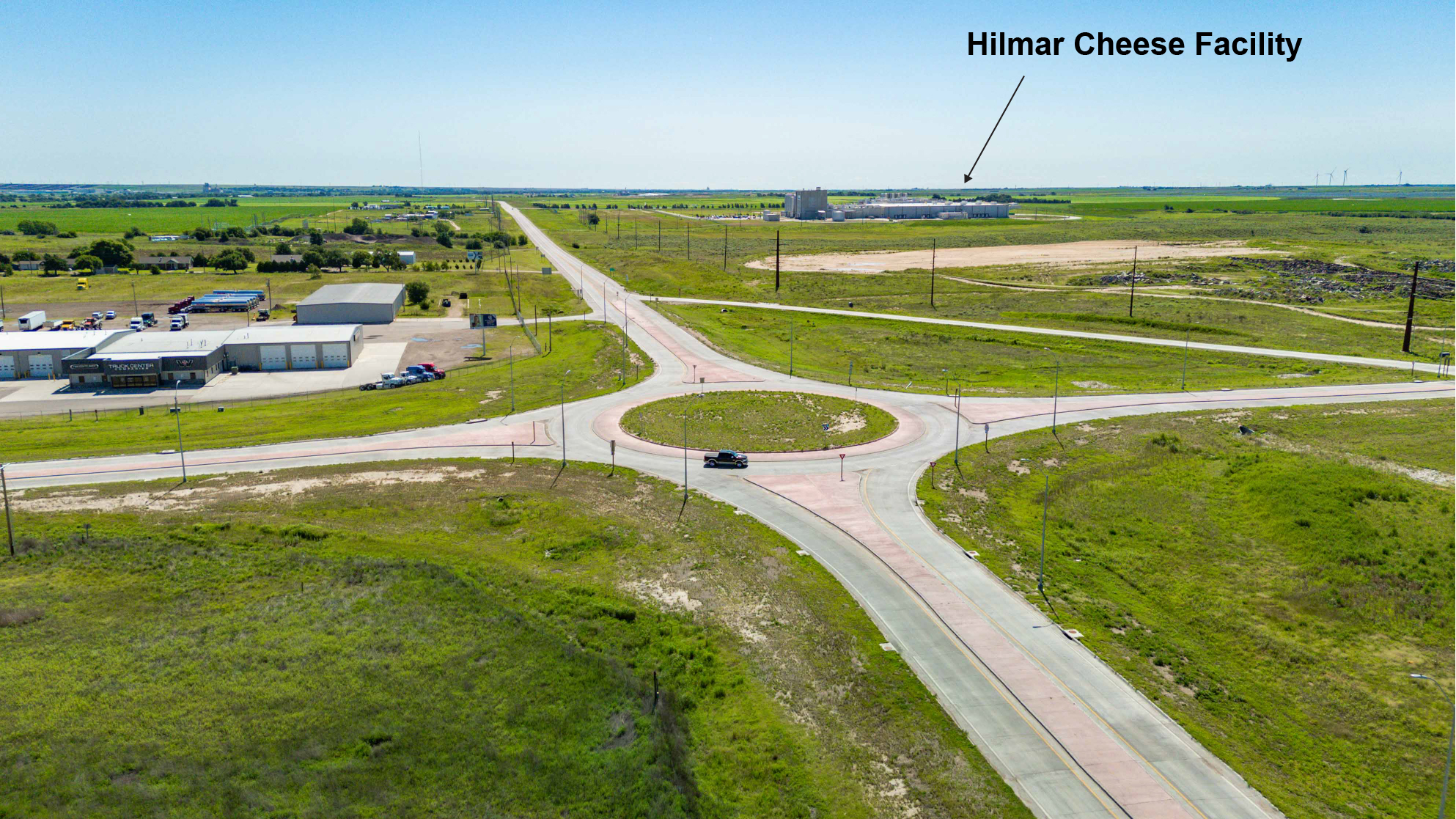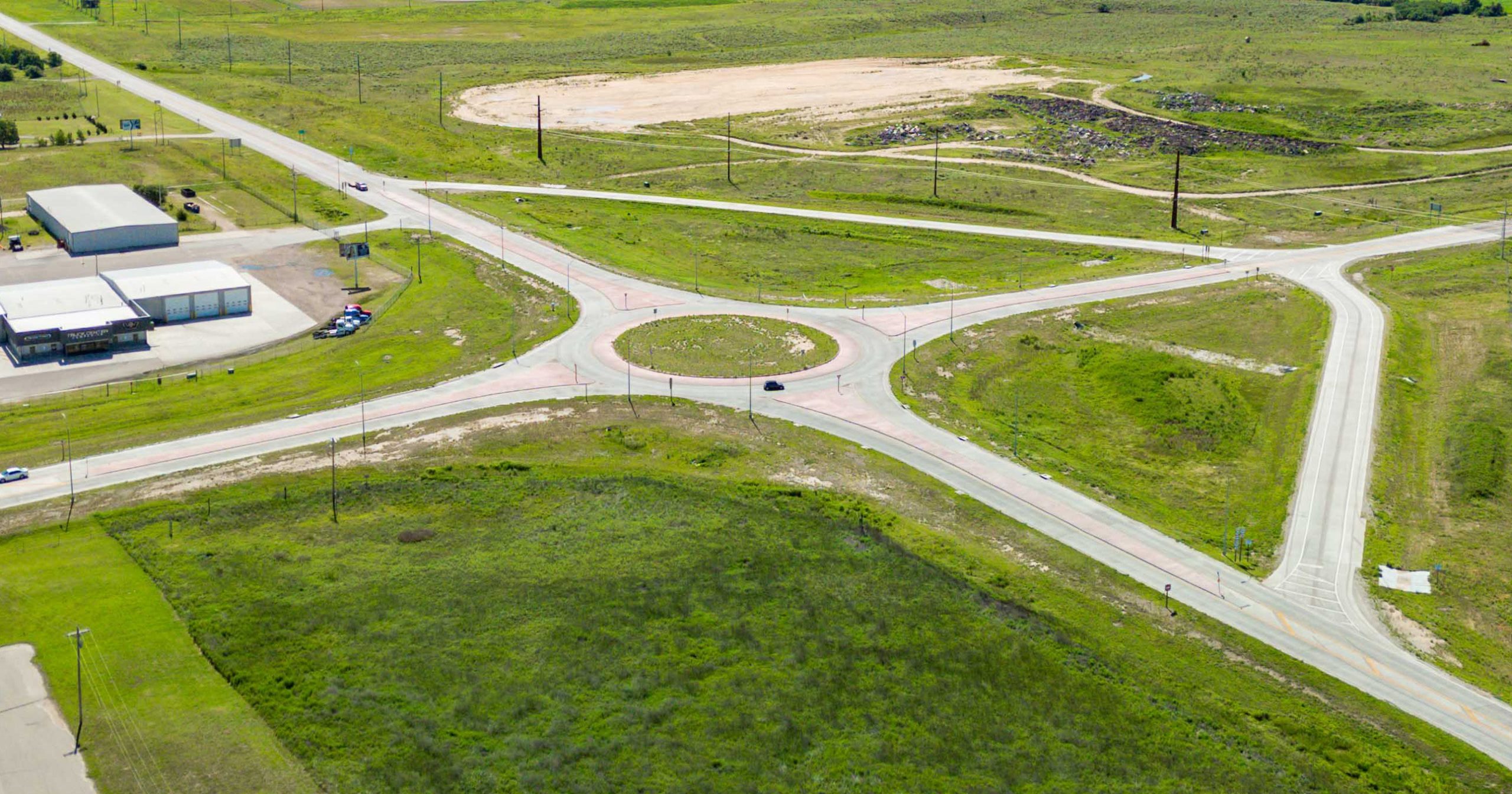
Roundabout Success: When Circling Back Moves You Forward
July 22, 2025
Usually when you hear about someone going around in circles, it’s not a good thing, but recently, it was our job to figure out how to get the people of Dodge City, Kansas, circling an intersection.
With the construction of a new Hilmar Cheese facility near Dodge City, the expected traffic at the intersection of two large roadways that already carried plenty of vehicles was expected to cause congestion due to its existing four-way stop design. Hilmar expected the new facility to receive 160 semi-trucks of raw milk each day, with 60 semis also leaving the facility each day with finished product. The Kansas Department of Transportation (KDOT) approached us and asked for proposals to lessen the congestion on a shortened timeline. That’s when MKEC’s transportation team got to work with a plan to circulate the traffic efficiently.

Coming full circle
Our initial proposal laid out several options for KDOT that would address the anticipated traffic problem at this four-way intersection, but after studying all the angles, everyone came around to the idea that a roundabout was the best way to go.
“We brought on a traffic consultant,” says Greg Nelson, civil engineer for MKEC. “They looked at all the different scenarios. We looked at a four-way stop, a signalized intersection, and then the roundabout itself. The roundabout came out on top as far as level of service goes. We also did some preliminary drawings of a signalized intersection, too.”
Although the general public often provides some pushback when roundabouts are installed, they are an effective way to keep traffic moving and lower the accident rate and the severity of accidents when they happen.
“One of the features of roundabouts is that there may be accidents, but they’re usually non-injury accidents,” Nelson says. “Cars are going at a lower rate of speed, and the accidents are typically side-swiping ones. This is one of the reasons Kansas has been transitioning to more roundabouts at intersections of major rural highways. They tried four-way stops, but people would come to the stop and often misjudge how far away a vehicle was. Safety is one of the major features of a roundabout. There are fewer points of conflict because you’re always making a right turn when you enter and when you leave it. You don’t have the possibility of someone making a turn in front of an oncoming car.”

“Safety is one of the major features of a roundabout. There are fewer points of conflict because you’re always making a right turn when you enter and when you leave it.”
Greg Nelson, Civil Engineer

Making the cars go round and round
While traffic roundabouts are safer, they’re not always easy to design, and this particular roundabout threw us a couple of curves.
“This was the largest one in diameter I have worked on,” Nelson says. “It was 210 feet in diameter with a 20-feet-wide roadway through the circle. KDOT wanted semis to drive through the roundabout without their rear axles having to ride up in the center. Generally, there’s a truck apron in the center for the back of trucks to bump over, but KDOT did not want the trucks to have to go onto that apron, which meant this roundabout had to be large.”
In addition, an existing wind turbine manufacturer in Garden City, Kansas, often ships windmill blades through the intersection. These oversized loads would not be able to navigate a roundabout, but the ability for them to access the intersection needed to be maintained. Nelson and the MKEC team designed bypass lanes that would allow these trucks to pass through the intersection without needing to use the roundabout. The bypass lanes also eased the concerns of first responders that an accident in the roundabout could block their access to the intersection during an emergency.

Nelson’s previous experience with roundabouts was invaluable to the project, especially on the compressed timeline KDOT desired.
“Roundabouts are becoming more prevalent, but it’s not something every transportation engineer can do,” says Jay Anglemyer, civil engineer and principal at MKEC. “Greg has tremendous roundabout experience and quickly gained the confidence of the folks at KDOT that we were the right firm with the right solutions to design this project. With our traffic engineers’ help, we got off on the right foot.”
Getting everyone in the loop
A project like this takes a great deal of coordination to keep everyone on track. We worked with a team of about eight people: project management consultants, KDOT employees, and our team. In addition to weekly and sometimes bi-weekly meetings, we kept the communication lines open through phone calls and emails, making sure everyone had the information they needed to get the job done.
“Greg and I were mostly involved with coordination and management with KDOT and the public side of things,” Anglemyer says. “We made sure everything stayed on schedule, as well. This wasn’t the traditional KDOT project structure. Usually, you are associated with a road squad, but we had the assistant director of program and project management working with us, which made it a little bit different dynamic than you usually have.”
Circling back
The roundabout opened in spring of 2025, and despite some initial public wariness, the consensus is that going around in circles works.
“Overall, what we’ve heard is it has been well-accepted,” Anglemyer says.
KDOT reports they have heard nothing but positive comments and that truck drivers love it because they can continue through the intersection without always having to stop.
In a roundabout way, we provided a successful design that is truly straightforward: safer, smoother travel for the residents and businesses in and around Dodge City.

